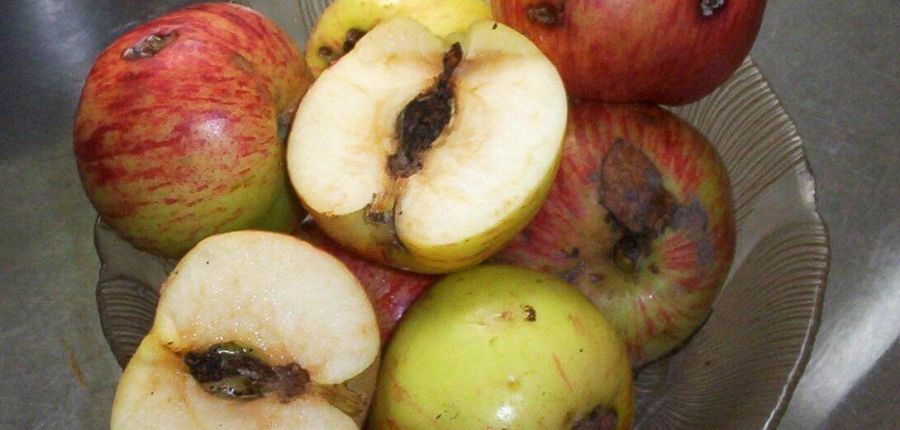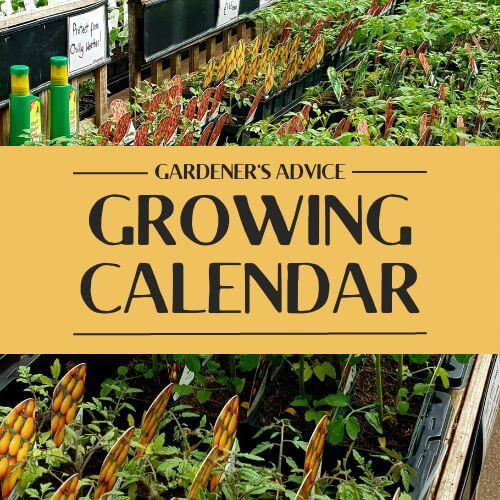The story of an apple tree
Posted By: rocket veg Category: Pests and Diseases, Seasonal AdviceAn elderly apple tree grows at the top end of my allotment. It’s one of a number of mature fruit trees dotted across the whole site and which were probably planted many years ago in the days when there were no restrictions on the height of fruit trees. Left unchecked, my tree would be a good 15 feet tall by now and therefore a problem when it comes to fruit picking time but (fairly) regular pruning has kept most of the branches within reasonable reach.
Now is a good time to prune apple trees. They will have shed all their leaves, a sign that they are in a dormant state, conserving energy in preparation for new growth and fruiting during the coming year. I don’t profess to be an expert when it comes to pruning but I follow a few basic rules which seem to have worked over the years: start by removing any dead, diseased or damaged branches and cut off branches which cross through the central structure of the tree, thereby restricting light and air. I bear in mind the old adage, ‘pruning encourages vegetative growth’ – so simply cutting off the tops of branches results in a spurt of upward growth in the form of clusters of slender twigs. Pruning is best undertaken when you are not in a hurry and can contemplate and review progress as you go. Stand back, take stock, proceed with care. You can’t replace a branch…
Yesterday, I hard pruned my apple tree, so much so that the overall height has been reduced by over half and I am left with eight or so sizeable branches, each with a stumpy cut end, which have restored the tree’s distinctive goblet shape. When I looked at my handiwork this morning, I wondered if I had gone just a bit too far but my drastic actions are necessary for a good reason: the tree suffers from an ongoing problem with insect damage, resulting in ‘maggoty apples’.
I don’t know the apple variety: they’re ‘eaters’, sweet, crisp and juicy, good looking green apples with a lovely red bloom which is why I am determined to overcome the insect pest problem. The tree generally crops well in late summer but on close inspection nearly every apple has a small brown-edged hole, either on the side or near the end opposite the stalk, the tell-tale sign of damage by the caterpillar of the codling moth. Cut open, a ghastly sight is revealed – a tunnel eaten out by the caterpillar which has not only fed on the apple but also deposited its droppings as it goes. It’s possible to rescue some of the fruit by careful use of a knife, but an important part of the pleasure of eating an apple is taking a bite from an unblemished fruit and savouring the first mouthful, not nibbling a few off-cuts.
Dealing with the codling moth is a tricky business. I’ve tried using a trap in early summer – a corrugated plastic tube containing a pheromone lure to attract the male codling moth, which then meets his fate on a sticky pad – but with no success. I’ve also used grease bands tied in place on the main trunk to trap unwary insects on their upward journey. My allotment neighbours suggested that I cut the tree down and plant a new one but the tree is a lovely old fellow, part of the eco system of the allotment site and it seems a bit drastic to remove it.
Having consulted various websites, I’ve decided to resort to using a ‘winter wash’, spraying the branches with an organic mixture before the new growth begins to show in a few weeks. The codling moth is a clever little beast, hiding itself away during winter in the smallest crevices in the bark or the remains of any mummified apples, so giving the tree a good spraying with a proprietary winter wash should help to eradicate any grubs. I intend completing the job using a fresh grease band, securely tied with string to stop insects crawling underneath. Whatever the outcome the apple tree will be staying and my hens, who enjoy the shade from its branches, will be happy.







